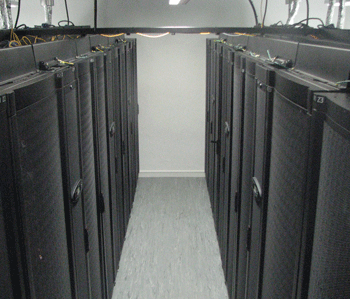Indian-origin researcher working on ways to monitor heat generated by data centre equipment
 Washington, June 3 : An Indian-origin researcher at the Georgia Institute of Technology is working on new heat transfer models that can be used in future data centre facilities to reduce the portion of electricity used to cool their equipment by as much as 15 percent.
Washington, June 3 : An Indian-origin researcher at the Georgia Institute of Technology is working on new heat transfer models that can be used in future data centre facilities to reduce the portion of electricity used to cool their equipment by as much as 15 percent.
"Computers convert electricity to heat as they operate. As they switch on and off, transistors produce heat, and all of that heat must be ultimately transferred to the environment. If you are looking at a few computers, the heat produced is not that much. But data centers generate heat at the rate of tens of megawatts that must be removed," said Yogendra Joshi, a professor in Georgia Tech''s Woodruff School of Mechanical Engineering.
While making a presentation at the Second International Conference on Thermal Issues in Emerging Technologies, Theory and Applications, the researcher pointed out that a typical refrigerator-sized server cabinet produced about one to five kilowatts of heat about five years ago.
Joshi further said that present-day high-performance computing cabinets of about the same size produced as much as 28 kilowatts, and machines already planned for production would produce twice as much.
"Some people have called this the Moore''s Law of data centres. The growth of cooling requirements parallels the growth of computing power, which roughly doubles every 18 months. That has brought the energy requirements of data centres into the forefront," observed Joshi, who is also the John M. McKenney and Warren D. Shiver Chair in the School of Mechanical Engineering.
Most existing data centres rely on large air conditioning systems that pump cool air to server racks. As cooling demands have increased, data centre designers have developed complex systems of alternating cooling outlets and hot air returns throughout the facilities.
"How these are arranged is very important to how much cooling power will be required. There are ways to rearrange equipment within data centres to promote better air flow and greater energy efficiency, and we are exploring ways to improve those," Joshi said.
With his students, Joshi has assembled a small high-power-density data centre on the Georgia Tech campus that includes different types of cooling systems, partitions to change room volumes and both real and simulated server racks.
They use fog generators and lasers to visualize air flow patterns, infrared sensors to quantify heat, airflow sensors to measure the output of fans and other systems, and sophisticated thermometers to measure temperatures on server motherboards.
The researchers say that in addition to studying the effects of alternate airflow patterns, they are also verifying that cooling systems are doing what they''re supposed to do.
Joshi and his colleagues are also exploring algorithms that could help even out the computing load by assigning new computationally-intensive tasks to cooler machines, avoiding hot spots.
While existing computer models predict that temperatures will reach dangerous levels in a matter of seconds, actual measurements done by Joshi''s graduate students show that the equipment can run for as much as six minutes without cooling.
"We''re developing models for different parts of the data centre to learn how they respond to changes in temperature. Existing models consider that temperature changes across a server rack will be instantaneous, but we''ve found that it takes quite a relatively long time for the server to reach a steady state," said Shawn Shields, a former graduate student in Joshi''s lab.
The researchers are also exploring ways to utilise waste heat from data centres. They reckon that options may include heating nearby buildings or pre-heating water.
Joshi believes there''s potential to reduce data centre energy consumption by as much as 15 percent by adopting more efficient cooling techniques like those under development in his lab.
"Our data center laboratory is a complete sandbox in which we can study all sorts of options without affecting anybody''s computing projects. We can look at interesting ways to improve rack-level cooling, liquid cooling and thermoelectric cooling," he said.
A research article on the study has been published in the Journal of Electronic Packaging and International Journal of Heat and Mass Transfer. (ANI)